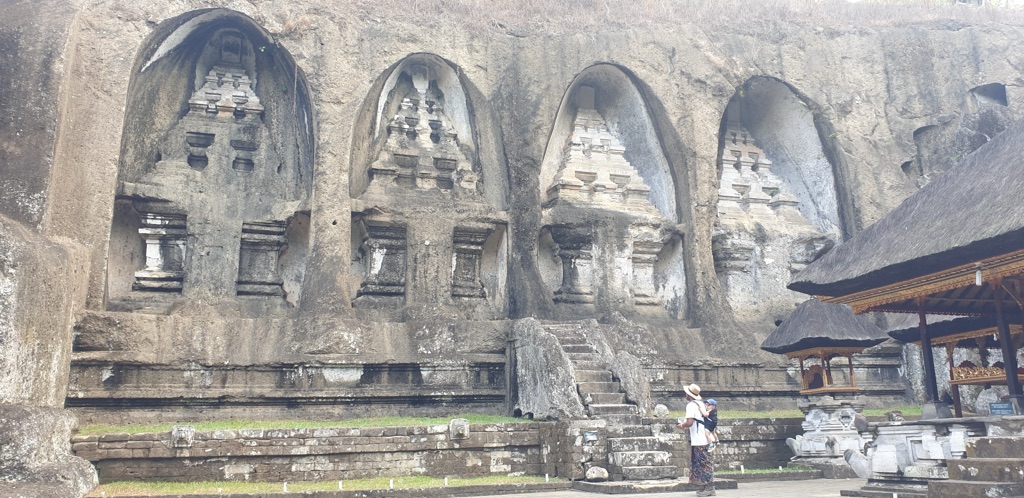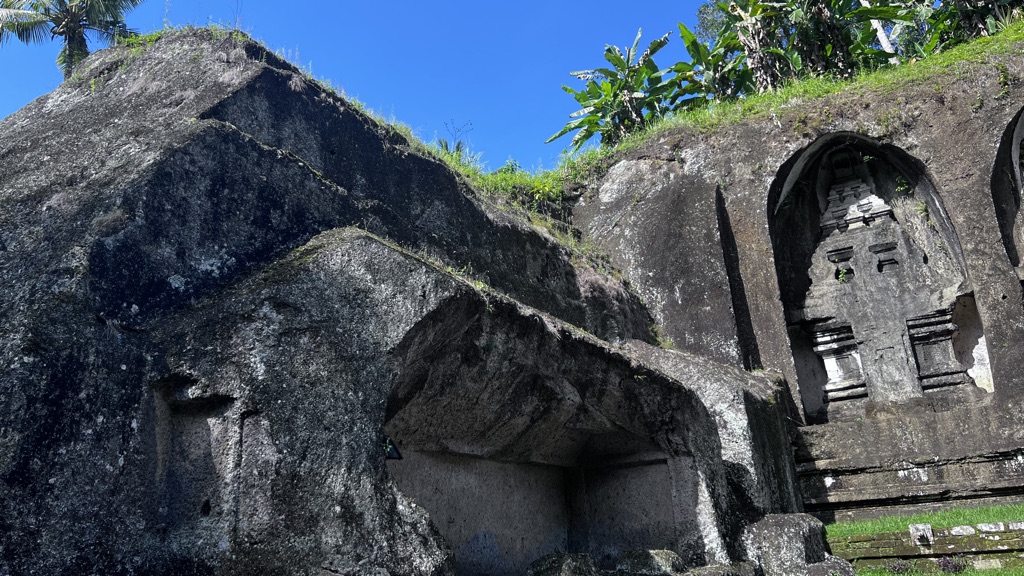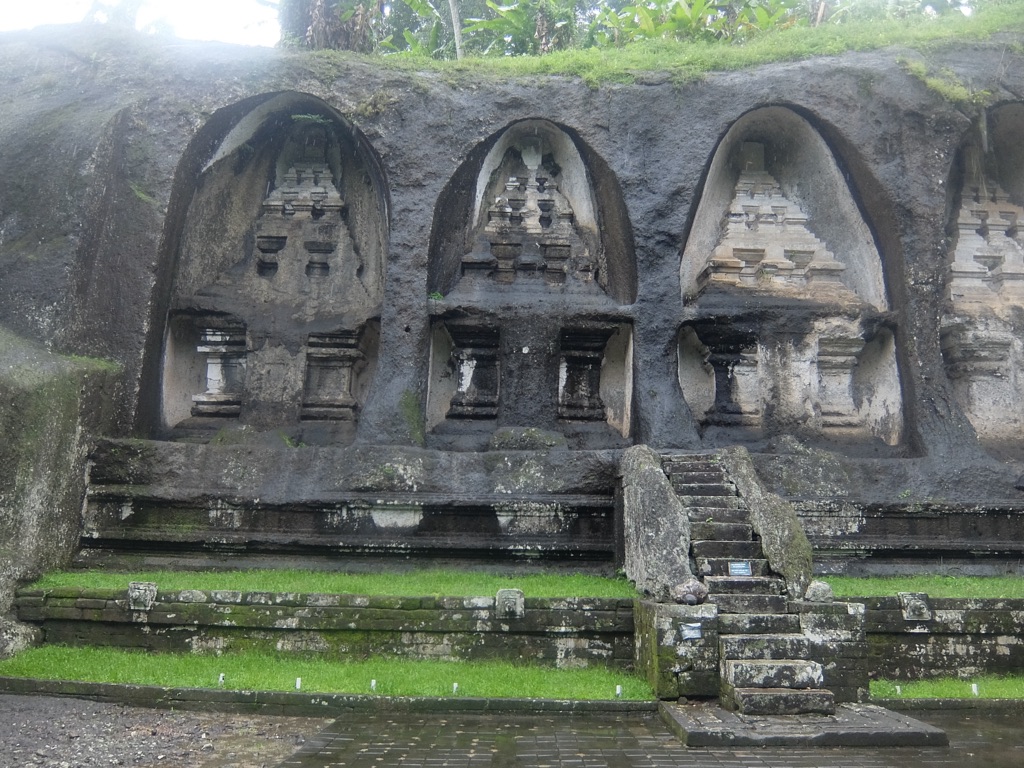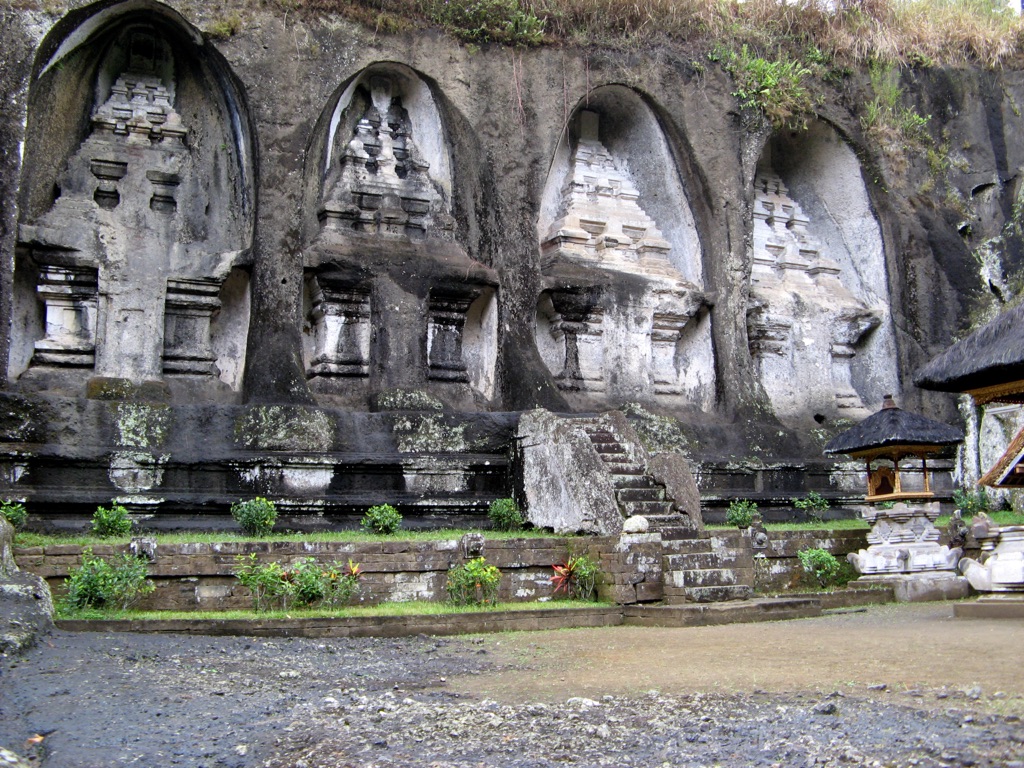Gunung Kawi Temple is a striking archaeological site on Bali, Indonesia. It features a series of rock-cut candi (shrines) carved into the face of a rock cliff. This temple complex is a blend of Hindu and Buddhist influences and dates back to the 11th century. It is believed to be dedicated to King Anak Wungsu of the Udayana dynasty and his favorite queens. Gunung Kawi Temple is a serene place that offers a glimpse into Bali’s rich past.
Get your dose of History via Email
Historical Background of Gunung Kawi Temple
The discovery of Gunung Kawi Temple dates back to the early 20th century. Dutch archaeologists stumbled upon it, revealing its significance. The temple was created during the 11th century, under the orders of King Anak Wungsu. It served as a royal monument and a place for meditation. Over the years, the site has seen various inhabitants, including monks and hermits seeking spiritual solitude. The temple has not been the scene of any known historical battles or events but remains an important cultural landmark.
King Anak Wungsu ruled Bali after the death of his father, Udayana. He is credited with the construction of Gunung Kawi Temple. The king’s reign was a period of relative peace and prosperity. This allowed for the creation of significant religious structures. The temple’s design reflects the king’s influence and the religious practices of the time. It is a testament to the king’s devotion and the skilled artisans of his era.
After its initial period of use, Gunung Kawi Temple became a site of pilgrimage. It attracted those from various regions seeking spiritual enlightenment. The temple complex has been well-preserved, considering its age. It continues to be a place of worship and meditation for locals and visitors alike. The site’s historical importance is evident in its ongoing preservation and the reverence it receives.

Gunung Kawi Temple has not been the center of any major historical events. However, it has been a silent witness to the ebb and flow of Balinese history. The temple has withstood the test of time, including the arrival of European colonizers and the changes in religious practices. Its resilience is a testament to the enduring nature of Balinese culture and spirituality.
The temple’s historical significance is also marked by its status as a UNESCO World Heritage candidate. This recognition underscores the importance of Gunung Kawi Temple. It is not only to Bali and Indonesia but to the world’s cultural heritage. The temple continues to attract historians, archaeologists, and tourists. They are all eager to explore its ancient mysteries and serene beauty.
About Gunung Kawi Temple
Gunung Kawi Temple is nestled in a lush valley surrounded by paddy fields and a river. The complex consists of 10 candi, each standing at about 7 meters tall. These shrines are carved out of the rock face and are believed to be memorials to King Anak Wungsu and his queens. The candi are designed to resemble the actual statues and structures found in other temples but are hewn directly from the rock.

The construction of Gunung Kawi Temple involved meticulous rock-cutting techniques. These techniques were advanced for their time. The builders used simple tools to carve the intricate designs and the candi themselves. The temple’s architecture is a mix of Hindu and Buddhist elements. This reflects the syncretic religious culture of Bali during the 11th century.
One of the architectural highlights of Gunung Kawi Temple is the relief work on the candi. The reliefs depict scenes from Hindu epics and traditional Balinese myths. The temple also features several meditation caves. These caves were carved out of the rock, providing a quiet space for spiritual practices.
The building materials for the temple were the natural rock of the cliff itself. This has allowed the temple to blend seamlessly with its environment. The use of local materials and the harmonious design exemplify the Balinese principle of Tri Hita Karana. This principle emphasizes the balance between humans, nature, and the gods.

Gunung Kawi Temple is not only a historical site but also an active religious place. Locals frequently visit for prayer and offerings. The temple’s serene atmosphere and natural setting make it a popular destination for those seeking tranquility and a connection with the past.
Theories and Interpretations
Several theories surround the purpose and symbolism of Gunung Kawi Temple. The most widely accepted theory is that the temple served as a royal monument. It was a cenotaph for King Anak Wungsu and his family. The candi are thought to be symbolic representations of the royal personages, rather than actual tombs.
Another interpretation suggests that Gunung Kawi Temple was a hermitage for monks. The meditation caves support this theory. They indicate that the site was used for spiritual practices and retreats. The blend of Hindu and Buddhist elements also suggests a syncretic approach to religion. This was common in Bali during the temple’s creation.
Mysteries still shroud Gunung Kawi Temple, particularly regarding the exact rituals performed there. The lack of written records from the period means that much of what is known is based on local lore and interpretations of the site’s carvings and architecture.

Dating of the temple has been carried out through stylistic analysis of the carvings and inscriptions. These suggest an 11th-century origin. However, no definitive dating method, such as radiocarbon dating, has been applied. This is due to the nature of the temple’s rock material, which does not lend itself to such techniques.
The interpretations of Gunung Kawi Temple are continually evolving. This is as new research sheds light on its history and purpose. The temple remains an important site for understanding the religious and cultural dynamics of ancient Bali.
At a glance
Country: Indonesia
Civilization: Balinese (Udayana Dynasty)
Age: 11th century AD

